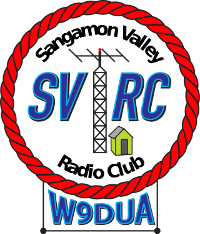If you think Californians are the only ones waiting for the "Big One" to shake the state, think again.
For our region's disaster planners and those whose efforts are pinned to responding to an earthquake here--amateur radio operators included--it's not a matter of "if." It's a matter of "when."
On Thursday, February 4, ARRL Illinois Section manager Thom Beebe, W9RY, will be bringing SVRC up to date on the robust efforts being made by the United States Geological Service in conjunction with ARRL clubs and ARES--its emergency service arm--to recruit and train amateur radio operators both in observing and reporting seismic activity using Winlink technology. His powerpoint presentation begins at 7 p.m. on Google Meet.
According to the USGS, the likelihood of a damaging earthquake (magnitude 6.3 or greater, occurring somewhere in the central United States within the next decade or so is 40 percent to 63 percent and 86 percent to 97 percent within the next 50 years. A major earthquake (magnitude 7.5 or greater) would be felt throughout much of the central and eastern United States, with damages amounting to several billion dollars.
Illinois is flanked on its western and eastern borders by two active seismic zones: the New Madrid Seismic Zone and the Wabash Valley Seismic Zone. The New Madrid fault zone is very active. In 1811-1812 the area in southern Missouri was hit by an earthquake that registered 7.5 on the Richter scale.
Illinois is among 16 states with the highest risk for earthquakes, including: Alaska, Hawaii, California, Oregon, Washington, Nevada, Utah, Idaho, Montana, Wyoming, Missouri, Arkansas, Tennessee, Kentucky and South Carolina.
Online 02/04/2021 7:00pm America/Chicago publicIf you think Californians are the only ones waiting for the "Big One" to shake the state, think again.
For our region's disaster planners and those whose efforts are pinned to responding to an earthquake here--amateur radio operators included--it's not a matter of "if." It's a matter of "when."
On Thursday, February 4, ARRL Illinois Section manager Thom Beebe, W9RY, will be bringing SVRC up to date on the robust efforts being made by the United States Geological Service in conjunction with ARRL clubs and ARES--its emergency service arm--to recruit and train amateur radio operators both in observing and reporting seismic activity using Winlink technology. His powerpoint presentation begins at 7 p.m. on Google Meet.
According to the USGS, the likelihood of a damaging earthquake (magnitude 6.3 or greater, occurring somewhere in the central United States within the next decade or so is 40 percent to 63 percent and 86 percent to 97 percent within the next 50 years. A major earthquake (magnitude 7.5 or greater) would be felt throughout much of the central and eastern United States, with damages amounting to several billion dollars.
Illinois is flanked on its western and eastern borders by two active seismic zones: the New Madrid Seismic Zone and the Wabash Valley Seismic Zone. The New Madrid fault zone is very active. In 1811-1812 the area in southern Missouri was hit by an earthquake that registered 7.5 on the Richter scale.
Illinois is among 16 states with the highest risk for earthquakes, including: Alaska, Hawaii, California, Oregon, Washington, Nevada, Utah, Idaho, Montana, Wyoming, Missouri, Arkansas, Tennessee, Kentucky and South Carolina.
